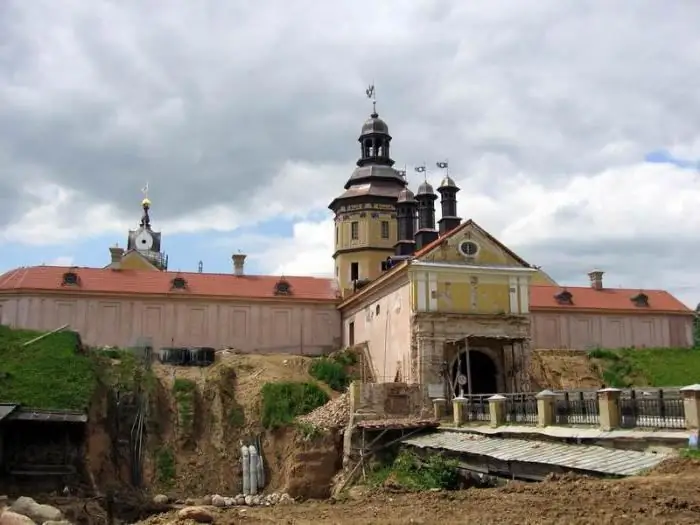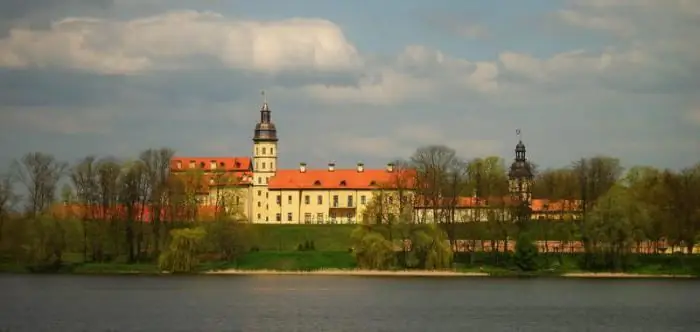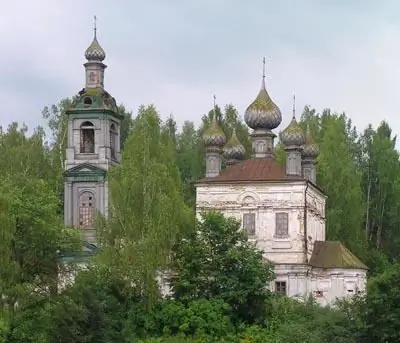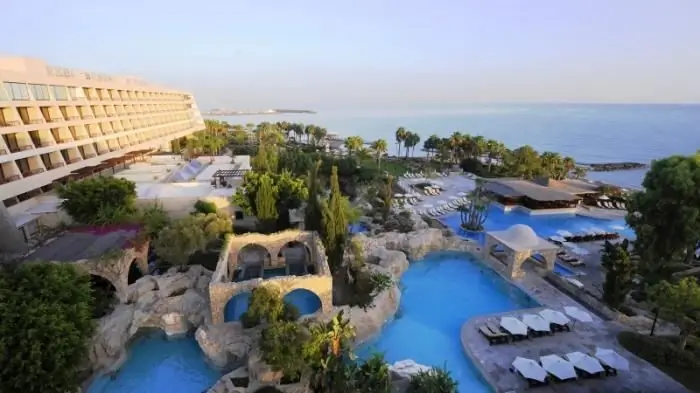- Author Harold Hamphrey [email protected].
- Public 2023-12-17 10:06.
- Last modified 2025-01-24 11:10.
Whatever they say, the most acceptable option for a Russian tourist who wants to travel to neighboring countries is Belarus. Nesvizh, whose sights will be described in this article, has absorbed the best of the history and culture of this friendly country. The town is located in the Minsk region. Therefore, getting there from the capital of Belarus and returning in one day is not difficult. The decoration of Nesvizh is the palace and park complex. Nesvizh Castle is included in the World Heritage List and is under the patronage of UNESCO. But in a town of only fifteen thousand people, there are other attractions.

How to get to Nesvizh
More than one hundred and twenty-five kilometers separate the town from Minsk. To see the sights of Nesvizh, you must first get to the metropolitan bus station "Vostochny". A ticket to the city will cost about sixty thousandBelarusian rubles. The first bus to Nesvizh leaves Minsk at seven in the morning, the last one at eight in the evening. Travel time is about two hours. You can reduce the cost of the road if you sit in a common train car (16 thousand rubles). But it will take you only to the neighboring Gorodeya, from which Nesvizh is eighteen kilometers away. So you have to change to a shuttle bus.
History of Nesvizh
To fully understand the sights of Nesvizh, one should understand the vicissitudes of its origin. Previously, scientists associated the name of the city with Prince Yuri Nesvitsky, who died in the battle of Kalka (1223). However, this version has been refuted by historians. And archaeological research does not find traces of buildings older than the fifteenth century. The first mention in chronicles also refers to 1446, when the Grand Duke of Lithuania Casimir Jagiellonchik donated the city to Jan Mikolay Nemirovich. This family owned Nesvizh for a short time. Already in 1492 Nesvizh was in the hands of the richest Lithuanian magnate Peter Kishke.
A representative of this family, Anna, married in 1513 to Jan Radziwill the Bearded. Nesvizh "by tow" went to these noble aristocrats. The son of Jan and Anna, Mikołaj Cherny, achieved for himself the title of "Prince of the Roman Empire". Thus, the possessions of the Radziwill family received the legal status of ordinations. That is, they were inherited by the eldest son. From this moment the golden age of Nesvizh begins. Radziwill's ordination lasted until 1939, until the Soviet troops captured this part of what was then Poland.

Nesvizh (Belarus): Attractions
The finest hour for the city struck with the accession to the rights of the ordinate of the son of Mykola Cherny - Christopher Radziwill, nicknamed the Orphan. In his youth, this gentry traveled to European countries. Arriving home, he enthusiastically set about arranging his family nest. Those sights of Nesvizh, which we admire today, were laid or erected by Christopher Sirotka. He demolished the old castle to the ground. And in 1583, a little further away, he began to build a new one. The reforms also affected the city. Chaotic in terms of building is replaced by orderly quarters. But this is not what the burghers of Nesvizh remember their ruler. The orphan abolished many taxes. Speaking in modern terms, he proclaimed a tax holiday, which is why artisans and merchants poured into the settlement in Nesvizh. In just a few decades, the city flourished and turned into a lively industrial and commercial center. In 1586 Nesvizh was granted the Magdeburg Law. The city was surrounded by powerful walls, surrounded by a moat. There were many churches and monasteries inside.

What to see in the city of Nesvizh (attractions)
Photos of this city and especially its castle are decorated with guidebooks around Belarus. Unfortunately, only one gate remained from the once powerful fortress walls - the Slutsk Gate. She meets travelers coming from the east. To understand the grandeur of medieval Nesvizh, head to the central market square. In the middle of it rises the symbol of the city's self-government -the town hall, built at the beginning of the seventeenth century in the Baroque style. Christopher Sirotka was a well-known philanthropist. He invited scientists and people of free professions to his city. As a result, the first printing house in Belarus and an Arian school worked in Nesvizh, where they studied natural sciences, theology and languages.

Monasteries and Cathedral
In the big and rich Nesvizh there used to be a lot of sacred buildings. The population of the city was multinational. There was a synagogue and an Orthodox church. The main one was the Cathedral of the Body of God. It is unique in that it is the second church in the world, fully designed in the Baroque style (after the Roman temple of Il Gesu). In the script of the cathedral there is a family tomb of the Radziwills - those powerful magnates who once owned the city of Nesvizh. The sights of the town are its monasteries. There were several. The order of Bernardines, Benedictines, Dominicans, Jesuits built their cloisters in the city.

History of the castle
What is interesting about Nesvizh? The sights described in the article are just a wonderful prelude to the wonderful symphony that you will see in the palace and park ensemble. But the castle was not built in one day. Nothing remains of the old wooden fortress. The first stone buildings were erected by the Dutch masters of fortification under Mykola Cherny Radziwill. In May 1583, Christopher the Sirotka laid a castle to the southwooden fortress. Ditches were dug around it. Later they were filled with the waters of the river Usha. The creation of the fortress was first attributed to the Italian architect Giovanni Bernardoni, but this version is doubtful for the reason that the architect specialized in the construction of sacred structures, and not fortifications. And the castle of Nesvizh was so fortified that it withstood two Russian sieges (in 1654 and 1660). And even when the Swedes took the city, the regiments of Charles the Twelfth, after a long siege, were forced to retreat without s alty slurping from the walls of the citadel. And only at the end of the Northern War, the castle, surrounded by thousands of armies, accepted the honorable terms of surrender.

Transformation into a palace and park complex
The Swedes thoroughly ruined the citadel. When military passions died down, the Radziwills in the 1720s began to reconstruct their family nest. But now they have invited non-military engineers. The fashion was no longer the same, and the artillery had reached such a level of defeat that powerful walls could not save it from blows. That is why the narrow loopholes and redoubts were replaced by the graceful forms of a real palace. Around it was a garden with ponds. Nesvizh is famous for the beauties of the palace and park complex. The sights of the family nest of the Radziwills were recreated with maximum accuracy and reflect the life of the magnates of the eighteenth century. By the way, you can read about the filling of the suite of luxurious halls in the novel "Princess Tarakanova" by G. Danilevsky. Tourists can visit not only the ceremonial halls and the library, but also the castle chapel.

Palace in the XIX-XX centuries
As the further development of events showed, the Radziwills were in a hurry. The defenseless castle was taken by the Russians during the partition of Poland. Then it was plundered by them during the retreat of Napoleon's army. Russian troops took out the we alth of the eleventh ordinate Dominic Jerome in ten carts. But in the sixties of the XIX century, the castle again returned to the possession of the Radziwills. New generations of this kind began to improve the area around the palace. Thanks to them, such sights of Nesvizh as the Castle, Old, New, English parks and the Japanese Garden appeared. By 1939, the area of the complex was approximately ninety hectares. When the Second World War raged on the territory of Poland, Soviet troops advanced westward and occupied the castle without firing a shot, arresting the Radziwill family. They were saved from execution by Italian diplomats. Representatives of the family were allowed to emigrate to Italy. And in their castle there was a hospital and a sanatorium. Only after the collapse of the USSR, restoration work began in the palace and park complex. The museum was opened in the summer of 2012.






